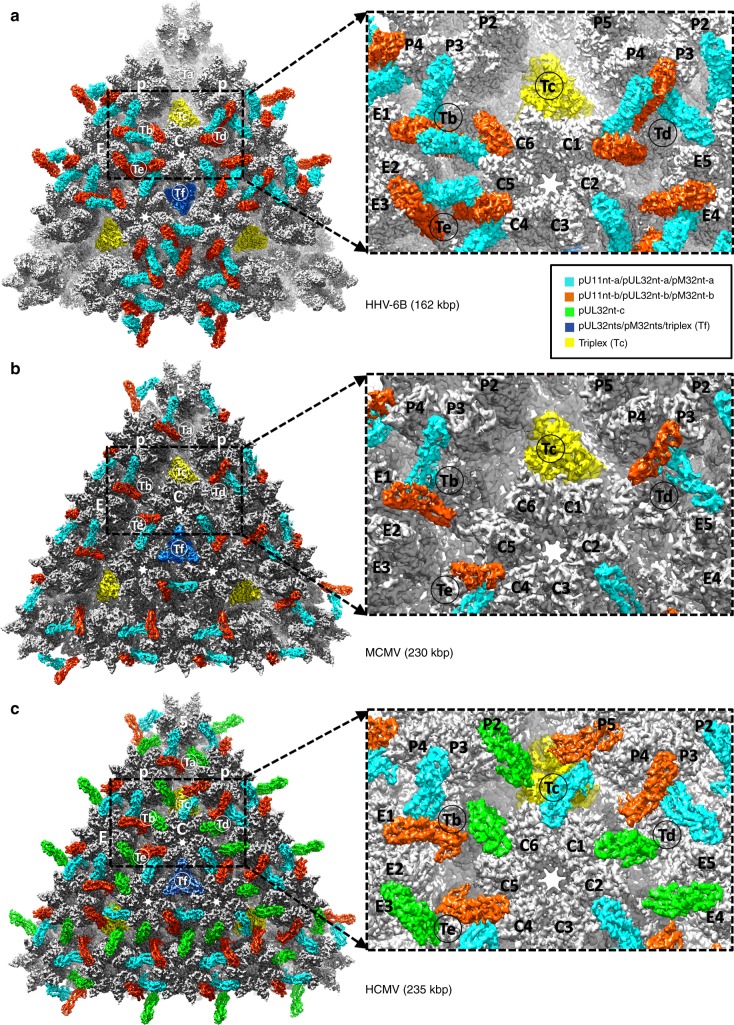Fig. 5.
Comparison of CATC-capsid-binding patterns in HHV-6B, MCMV, and HCMV. a A triangular facet of the HHV-6B icosahedral reconstruction. Four pU11nt subunits form a dimer-of-dimers, “VΛ”-shaped tetramer (cyan and orange red) atop triplexes Tb, Td, and Te, but absent from triplexes Ta, Tc (yellow), and Tf (blue). b The corresponding triangular facet in an MCMV icosahedral reconstruction9. Except for triplex Tc (yellow), two pM32nt subunits form a “Λ”-shaped dimer density (cyan and orange), with each of the two arms of the “Λ” holding to a neighboring hexon/penton capsomere like the cables of a cable-stayed bridge, and its vertex of the “Λ” sitting atop a triplex. c The corresponding triangular facet of an HCMV icosahedral reconstruction8. Three pUL32nt subunits form a “Δ”-shaped CATC densities atop every triplex. In all three panels, the density of pM32nt/pUL32nt and triplex in Tf region were colored in blue, as the densities in this region were smeared after imposing threefold symmetry during icosahedral reconstruction.

